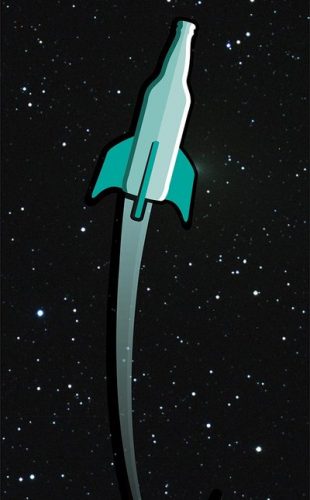
Eugene’s craft beer scene is out of this world, and Eugene’s biggest brewery, Ninkasi Brewing Company, is ready to make that figurative statement literal. On July 15, the Civilian Space eXploration Team (CSXT) will launch its second rocket into space, carrying 16 strains of brewer’s yeast as part of its cargo.
Ninkasi CEO Nikos Ridge says that to his knowledge, it’s the first brewing experiment involving ingredients that have traveled to space, and the first step toward brewing beer in space.
CSXT launched its first rocket in 2004 — the first amateur civilian rocketeer group to do so — but Ridge didn’t connect with CSXT and begin to develop the Ninkasi Space Program until last summer. He says that the idea of brewing beer using ingredients that have been to space developed naturally because CSXT is constantly trying see what’s possible. “Since September of last year we’ve been working on the various aspects of getting that done,” he says.
“We needed to work with them to develop a payload container that was able to contain the yeast vials and also figure out a way to insulate and appropriately keep them cool during the launch and as they travel into space and maintain their viability.” Ridge continues, “Then they come back down to earth and we retrieve them.”
Ninkasi lab technician Dana Garves manages everything quality-control-related at the brewery. She also worked on the design and manufacture of the capsule that will hold the 16 yeast strains on launch day. “The capsule itself is cylindrical and has space for 16 strains held in test tubes,” she explains. Ninkasi’s brewers picked the strains from the 22 in house based on popularity and what beers brewers wanted to make from the yeast.
The capsule was 3D-printed in Portland and is made from a plastic resin called nylon SOS. “In the very center is a large column that’s been hollowed out that’s going to hold dry ice,” Garves says. “That dry ice is supposed to keep our yeast cold, especially during reentry when the temperature will be the hottest.” If the yeast gets too hot, it will die and won’t be viable for brewing.
When the yeast returns from space, Garves will analyze samples for live and dead cells. Ridge says they hope to have results before the end of July. Garves and Ridge are hoping that the careful design of the capsule will keep the yeast strains safe. “If that is the case then we’ll have 16 strains of yeast that have traveled out of the atmosphere and entered space and returned, and then we will be able to use them and prop them up to use to brew beers here at the brewery,” Ridge says.
For updates from the Ninkasi Space Program, see nsp.ninkasibrewing.com.